I previously mentioned a biography I had of Brooke Foss Westcott (1825-1901) and his work on the Revised Version. Although he is known primarily for his Greek New Testament that he edited with Fenton John Anthony Hort (1828-1892), Westcott, contrary to Hort, was quite the writer. I want to focus here on just his commentaries, of which there are four: Gospel of John, Ephesians, Hebrews, and the Epistles of John.
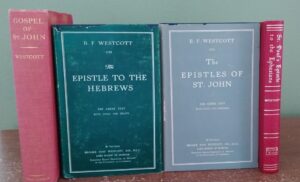
The Gospel According to St. John: The Authorized Version with Introduction and Notes (1880) originally appeared in The Holy Bible According to the Authorized Version (A.D. 1611): With an Explanatory & Critical Commentary & a Revision of the Translation, by Bishops & Other Clergy of the Anglican Church (known as the Speaker’s Commentary), edited by F. C. Cook (1804-1889). It was published separately in 1882 by John Murray. Regarding the few changes that were made, Westcott says: “I have corrected a few misprints, defined more exactly a few references, and changed two or three words and phrases which seemed liable to misapprehension. I have not however felt at liberty to make any other alterations or additions.” I own a copy of the “eighteenth impression” of 1937. Not sure if it was issued with a dust jacket. After Westcott’s death, The Gospel According to St. John: The Greek Text with Introduction and Notes (John Murray, 1908) was published in two volumes. It is based on the Westcott and Hort Greek text and the Revised Version. The prefatory note after the title page by Westcott’s son Arthur explains the differences between this and the 1882 volume on John.
Westcott’s commentary on Ephesians was also published posthumously: Saint Paul’s Epistle to the Ephesians: The Greek Text with Notes and Addenda (Macmillan and Co., 1906) was edited by and issued with a preface by J. M. S[Schulhof]. I own the Klock and Klock reprint of 1978 with with a foreword by Cyril J. Barber.
The Epistle to the Hebrews: The Greek Text with Notes and Essays was published by Macmillian in 1889. A second edition, which, according to Westcott, “is essentially a reprint of the former one,” was issued in 1892. I own the Eerdmans 1973 reprint.
The Epistles of St John: The Greek Text with Notes and Essays was published by Macmillian in 1883. A second edition, with some revision of the notes, but no changes in interpretation, was issued in 1885. A third edition, with some corrections, was issued in 1892. I own the Eerdmans 1957 reprint.
These commentaries, even without the Greek, are not light reading. The original commentary on John, since it is based on the Authorized Version and contains little Greek, is worth having. The others are only good as supplements to more modern commentaries, and then only when doing some serious, in-depth study. All of Westcott’s commentaries should be readily available online and from used book dealers.
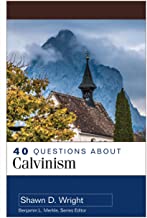 My
My 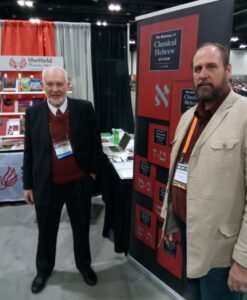 in England. It is now an independent academic press focused on biblical studies. It was founded and is still directed by
in England. It is now an independent academic press focused on biblical studies. It was founded and is still directed by 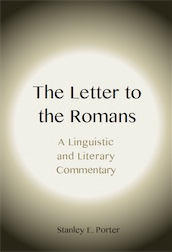 of which two volumes have been released. I only have one book in my library published by Sheffield Phoenix Press: a commentary on Romans titled
of which two volumes have been released. I only have one book in my library published by Sheffield Phoenix Press: a commentary on Romans titled 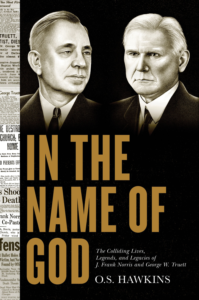 J. Frank Norris (1877-1952) pastored the First Baptist Church of Ft. Worth while George W. Truett (1867-1944) pastored the First Baptist Church of Dallas. Norris left the SBC while Truett remained in. Broadman & Holman (B & H) Academic is announcing the publication on September 1 of In the Name of God: The Colliding Lives, Legends, and Legacies of J. Frank Norris and George W. Truett, by O. S. Hawkins. I will have more to say about this publisher at a later date. This looks to be a fascinating book if you are interested in Baptist history. You can preview the book
J. Frank Norris (1877-1952) pastored the First Baptist Church of Ft. Worth while George W. Truett (1867-1944) pastored the First Baptist Church of Dallas. Norris left the SBC while Truett remained in. Broadman & Holman (B & H) Academic is announcing the publication on September 1 of In the Name of God: The Colliding Lives, Legends, and Legacies of J. Frank Norris and George W. Truett, by O. S. Hawkins. I will have more to say about this publisher at a later date. This looks to be a fascinating book if you are interested in Baptist history. You can preview the book 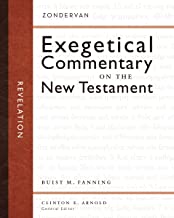 The newest commentary on Revelation, and one that is actually worth having, is the volume on Revelation by Buist Fanning,
The newest commentary on Revelation, and one that is actually worth having, is the volume on Revelation by Buist Fanning, 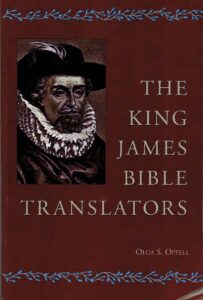 The best book on the King James translators—and one that is only about the translators—is The King James Bible Translators (McFarland & Company, Inc., Publishers, 1982), by
The best book on the King James translators—and one that is only about the translators—is The King James Bible Translators (McFarland & Company, Inc., Publishers, 1982), by 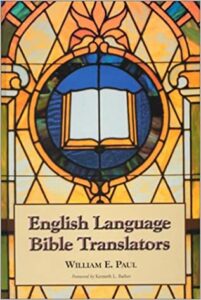 someone I know from the International Society of Bible Collectors named William E. Paul. Here is the publisher’s description: “It provides information about the men and women who produced English language translations. Arranged alphabetically by surname, each of the 346 entries includes biographical and vocational information; notes on the various editions produced; samples of their translation; and other pertinent facts. In cases where translations were done by committee, the chairpersons and project initiators are covered. Important anonymous translations are also included.”
someone I know from the International Society of Bible Collectors named William E. Paul. Here is the publisher’s description: “It provides information about the men and women who produced English language translations. Arranged alphabetically by surname, each of the 346 entries includes biographical and vocational information; notes on the various editions produced; samples of their translation; and other pertinent facts. In cases where translations were done by committee, the chairpersons and project initiators are covered. Important anonymous translations are also included.”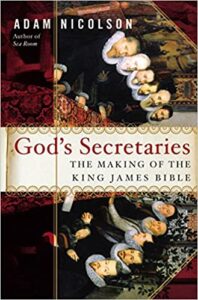 The most recent book about the King James Translators, but not exclusively, is God’s Secretaries: The Making of the King James Bible (HarperCollins, 2003), by Adam Nicolson. This book was first published by HarperCollins in Great Britain the same year with a different cover design under the title of Power and Glory: Jacobean England and the Making of the King James Bible. A paperback edition of the latter was issued in 2004, and of the former in 2005, but with yet another cover design. The book was reissued in paperback for the quatercentenary of the King James Bible in 2011 under the title of When God Spoke English: The Making of the King James Bible (HarperPress, 2011). God’s Secretaries is readily available and highly recommended.
The most recent book about the King James Translators, but not exclusively, is God’s Secretaries: The Making of the King James Bible (HarperCollins, 2003), by Adam Nicolson. This book was first published by HarperCollins in Great Britain the same year with a different cover design under the title of Power and Glory: Jacobean England and the Making of the King James Bible. A paperback edition of the latter was issued in 2004, and of the former in 2005, but with yet another cover design. The book was reissued in paperback for the quatercentenary of the King James Bible in 2011 under the title of When God Spoke English: The Making of the King James Bible (HarperPress, 2011). God’s Secretaries is readily available and highly recommended.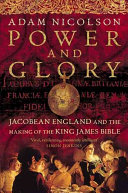
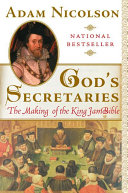
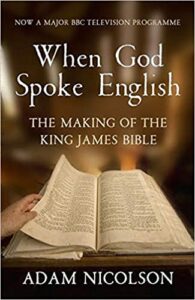
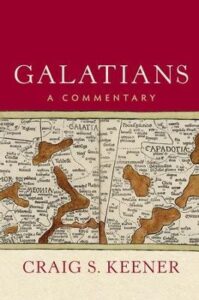 Regarding my 200+ commentaries on Galatians, I have a few times been asked which ones are the best. This is a tough question. I suppose that if someone put a gun to my head and said that I could keep five of my commentaries on Galatians but had to throw the
Regarding my 200+ commentaries on Galatians, I have a few times been asked which ones are the best. This is a tough question. I suppose that if someone put a gun to my head and said that I could keep five of my commentaries on Galatians but had to throw the rest of them away, then these (not in any order) are the five that I would keep. I would definitely include the newest Galatians commentary that I own, Galatians: A Commentary (Baker Academic, 2019), by Craig S. Keener, one of my favorite commentators and authors. Keener references my work on Galatians in a brief footnote on page 66, which also means that I made the bibliography and index. I would also keep the following by two of my favorite commentators: Grace in Galatia: A Commentary on St Paul’s Letter to the Galatians (Eerdmans, 1998), by Ben Witherington III; and Galatians in the Baker Exegetical Commentary on the New Testament series (Baker Academic, 2013), by Douglas J. Moo. The fourth one would have to be Galatians in the Word Biblical Commentary series (Word Books, 1990), by Richard N. Longenecker. This incomplete series
rest of them away, then these (not in any order) are the five that I would keep. I would definitely include the newest Galatians commentary that I own, Galatians: A Commentary (Baker Academic, 2019), by Craig S. Keener, one of my favorite commentators and authors. Keener references my work on Galatians in a brief footnote on page 66, which also means that I made the bibliography and index. I would also keep the following by two of my favorite commentators: Grace in Galatia: A Commentary on St Paul’s Letter to the Galatians (Eerdmans, 1998), by Ben Witherington III; and Galatians in the Baker Exegetical Commentary on the New Testament series (Baker Academic, 2013), by Douglas J. Moo. The fourth one would have to be Galatians in the Word Biblical Commentary series (Word Books, 1990), by Richard N. Longenecker. This incomplete series 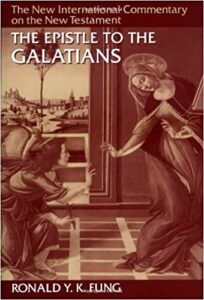 is now published by Zondervan, which is working on completing the series. Last, but certainly not least, is The Epistle to the Galatians in the New International Commentary on the New Testament series (Eerdmans, 1988), by Ronald Y. K. Fung. This is the replacement volume for the original NICNT volume on Galatians in 1953 by Herman N. Ridderbos that was translated from the Dutch. Fung’s work has itself been replaced by that of David A. deSilva, The Letter to the Galatians (Eerdmans, 2018). This is a much larger and more up-to-date volume, but I have not had a chance to look through it yet. It may turn out that it belongs in my top five list.
is now published by Zondervan, which is working on completing the series. Last, but certainly not least, is The Epistle to the Galatians in the New International Commentary on the New Testament series (Eerdmans, 1988), by Ronald Y. K. Fung. This is the replacement volume for the original NICNT volume on Galatians in 1953 by Herman N. Ridderbos that was translated from the Dutch. Fung’s work has itself been replaced by that of David A. deSilva, The Letter to the Galatians (Eerdmans, 2018). This is a much larger and more up-to-date volume, but I have not had a chance to look through it yet. It may turn out that it belongs in my top five list.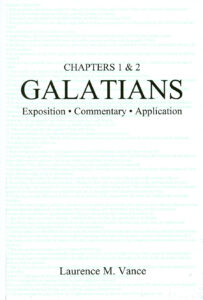 I mentioned in the previous post my commentary on Galatians chapters 1 and 2 and that I owned over 200 commentaries on Galatians. I also mentioned J. B. Lightfoot (1828-1889), the former Bishop of Durham. Why 200+ commentaries? My writing philosophy is that of Lightfoot: “Before you write a book on something you must first read everything on the subject.” This I did, and not just commentaries, but scores of articles and books about Galatians that were not commentaries. Galatians 1 & 2: Exposition, Commentary, Application was written during the years 2000-2001, but not published until 2010. After a preface and introduction, Galatians chapter 1 is covered on pages 1-57 and Galatians chapter 2 on pages 58-134. The bibliography appears on pages 135-154. The book contains no fluff, and no regurgitation from other commentaries, or else it would have been much longer—and perhaps sold better. This book has never been a good seller. You ought to write a commentary, I was told in the 1990s. So I did, and then few were interested in it. The main drawback, of course, is that the commentary only covers Galatians chapters 1 and 2. The book does contain a lot of meat on Galatians chapters 1 and 2, and I explain in the introduction how that it is not all that unusual to just write something on the first two chapters of Galatians, but evidently that is not enough to overcome the fact that the commentary only covers the first two chapters.
I mentioned in the previous post my commentary on Galatians chapters 1 and 2 and that I owned over 200 commentaries on Galatians. I also mentioned J. B. Lightfoot (1828-1889), the former Bishop of Durham. Why 200+ commentaries? My writing philosophy is that of Lightfoot: “Before you write a book on something you must first read everything on the subject.” This I did, and not just commentaries, but scores of articles and books about Galatians that were not commentaries. Galatians 1 & 2: Exposition, Commentary, Application was written during the years 2000-2001, but not published until 2010. After a preface and introduction, Galatians chapter 1 is covered on pages 1-57 and Galatians chapter 2 on pages 58-134. The bibliography appears on pages 135-154. The book contains no fluff, and no regurgitation from other commentaries, or else it would have been much longer—and perhaps sold better. This book has never been a good seller. You ought to write a commentary, I was told in the 1990s. So I did, and then few were interested in it. The main drawback, of course, is that the commentary only covers Galatians chapters 1 and 2. The book does contain a lot of meat on Galatians chapters 1 and 2, and I explain in the introduction how that it is not all that unusual to just write something on the first two chapters of Galatians, but evidently that is not enough to overcome the fact that the commentary only covers the first two chapters. 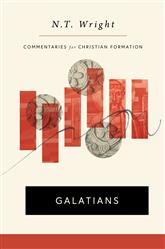 William B. Eerdmans Publishing recently announced the release of N. T. Wright’s
William B. Eerdmans Publishing recently announced the release of N. T. Wright’s 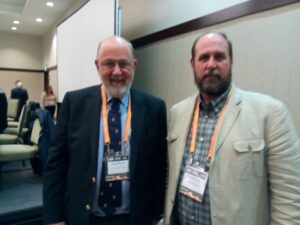 theology. A theologically conservative reviewer I respect
theology. A theologically conservative reviewer I respect